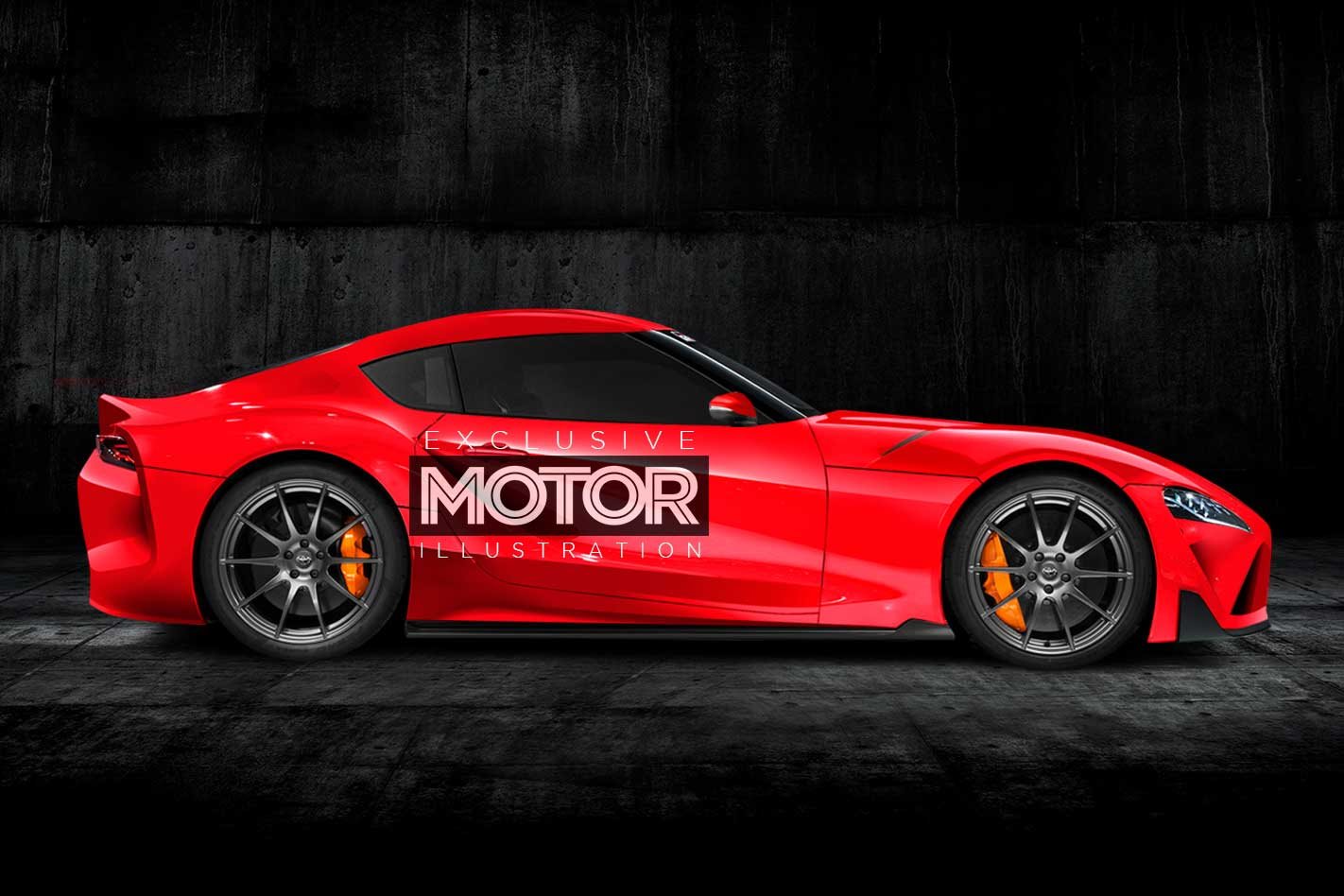As comebacks go, it’s a big one.
However, even the most enthusiastic of Toyota top brass admit they were underprepared for the song and dance that is being made about the return of the Supra – a car that has managed to retain its hard-earned reputation for style and performance despite having not been in production since 2002.
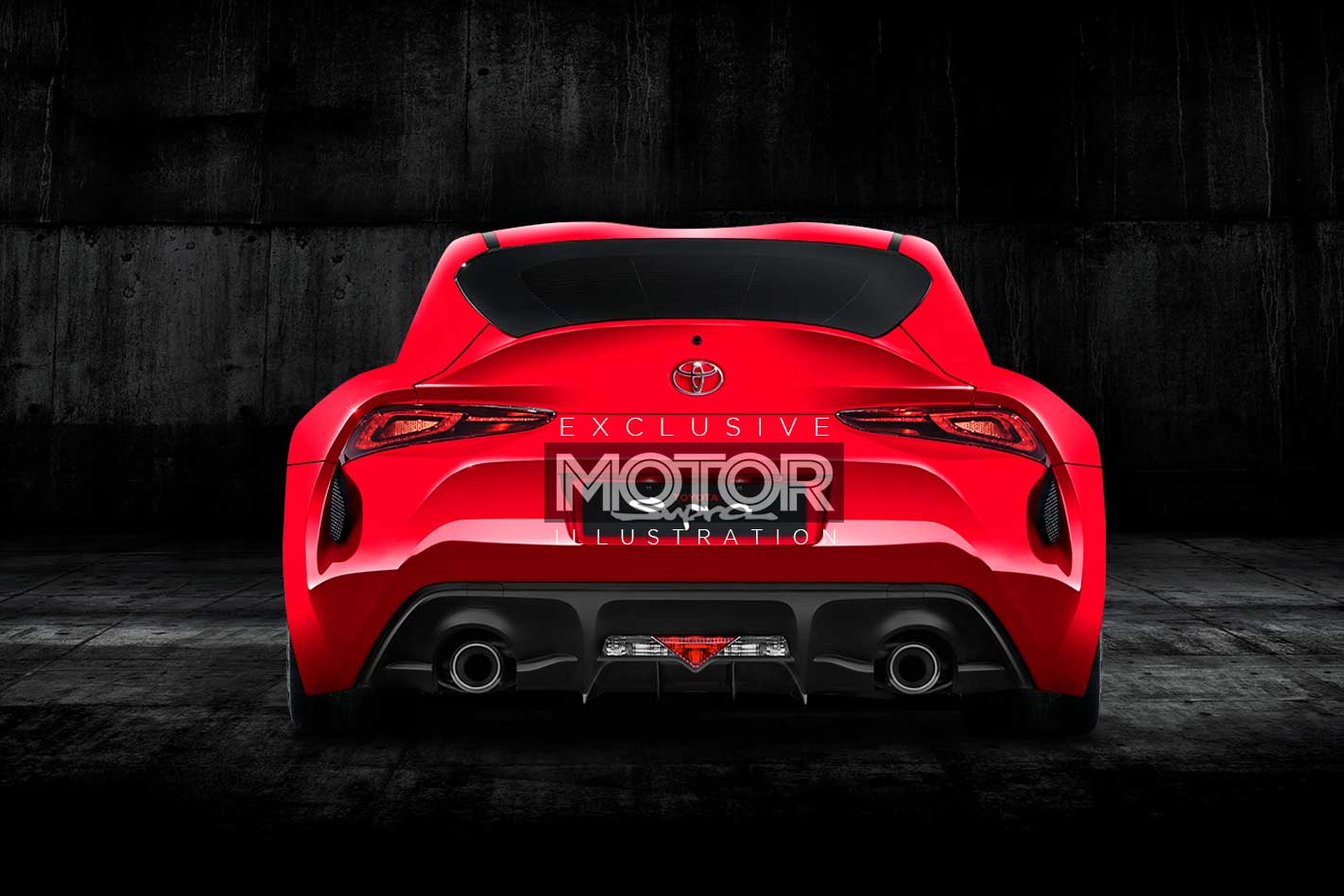
“The reaction up to now has been quite incredible,” says the man in charge of the new-for-2019 model, Supra engineering boss, Tetsuya Tada.
“It is a car a lot of people have been waiting a long time for us to return to the lineup, and the expectations are naturally quite high. I don’t think it will disappoint. Front engine and rear drive. With such a concept, you can have the greatest amount of fun.”
Tada-san’s words bring promise to the car that is set to share its mechanical package with the upcoming fourth-generation BMW Z4. It’s also good news that Toyota is not simply settling for a standard version of the new coupe, but has also engaged its Gazoo Racing performance car division to engineer a 300kW-plus variant of the new Supra.
The fact the company suggests the program acts as a spearhead for an extended range of hot new GR (Gazoo Racing) badged performance models definitely places it on the ‘one to watch’ list.
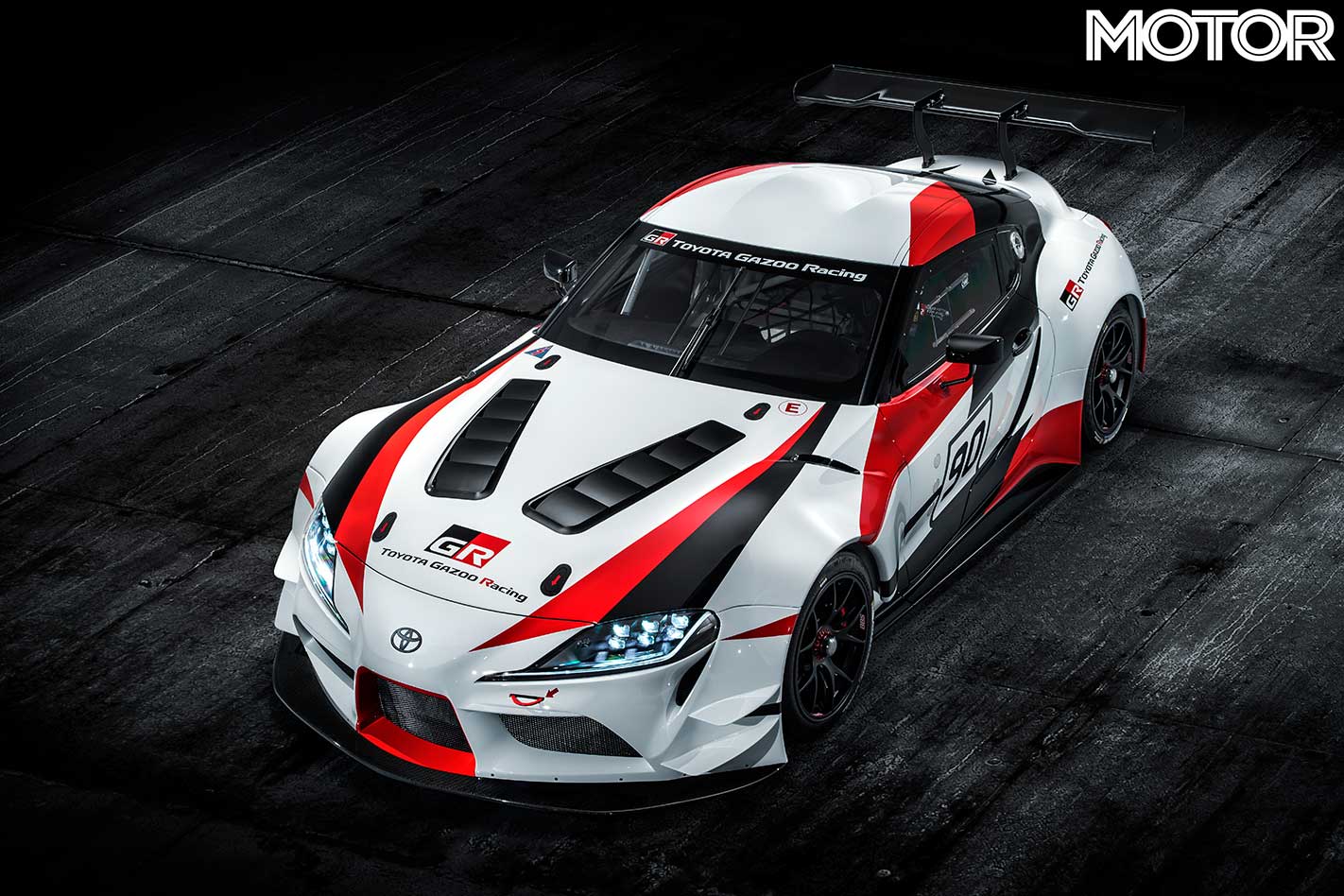
The range-topping version of the new rear-wheel drive Supra, which a senior Gazoo Racing manager has revealed to MOTOR is referred to by insiders as the Raijin – the mythological Japanese god of thunder – is set to run a powered-up version of its partner BMW’s turbocharged 3.0-litre inline six-cylinder engine.
That engine will be paired with a specially developed version of ZF’s eight-speed automatic gearbox featuring software mapping similar to that employed by the latest M5. It’s a combination aimed at placing the Supra GR – as the new car is tipped to be called – in competition with the likes of the Nissan 370Z Nismo.
In the new two-door Toyota, the BMW engine is reported to use a number of technical solutions already employed on BMW M division’s S55 unit – as used by the M3, M4 and the M2 Competition. It’s a move that sources reveal sees it develop in the region of 300kW while possessing the capability to rev to 7800rpm.
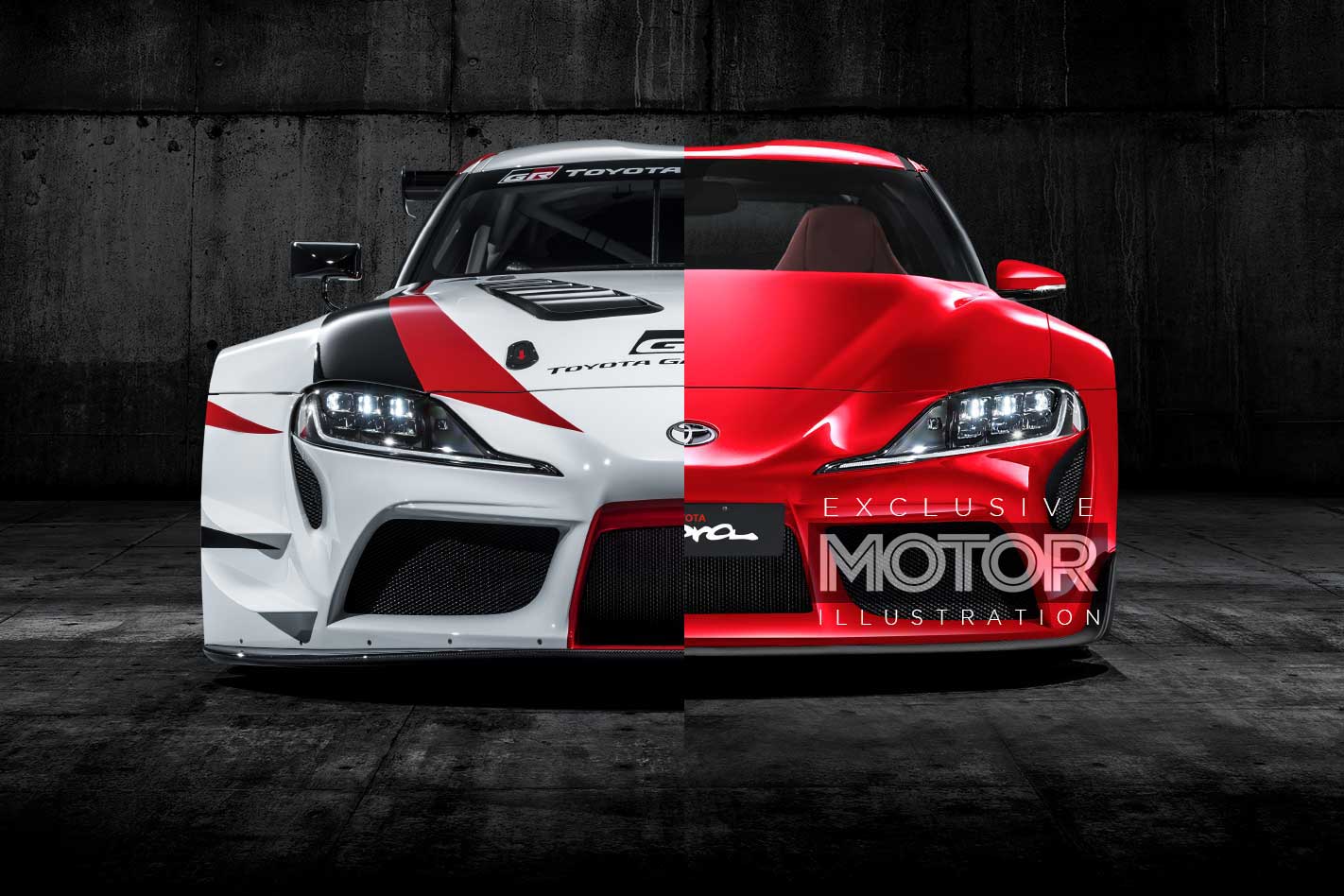
Despite its high-revving nature, though, the front, longitudinally-mounted inline six-cylinder is said to develop a similar 550Nm of torque to the S55 engine at little more than 1500rpm. They’re figures that hint it will not only be extremely flexible in nature, but promise to provide the hardcore Supra model with the sort of performance credentials to blow the lighter, four-cylinder-powered 86 out of the water.
The targeting of the Nissan 370Z Nismo by Gazoo Racing officials suggests the upcoming Supra GR, which is largely being developed by a European based team of engineers from a base at the Nurburgring, will boast a 0-100km/h time less than 5.0sec together with a top speed limited to 250km/h.
Among the features MOTOR has been told will appear on the new car is an electronically-controlled locking rear differential to vary the apportioning of drive to the individual rear wheels for added traction.
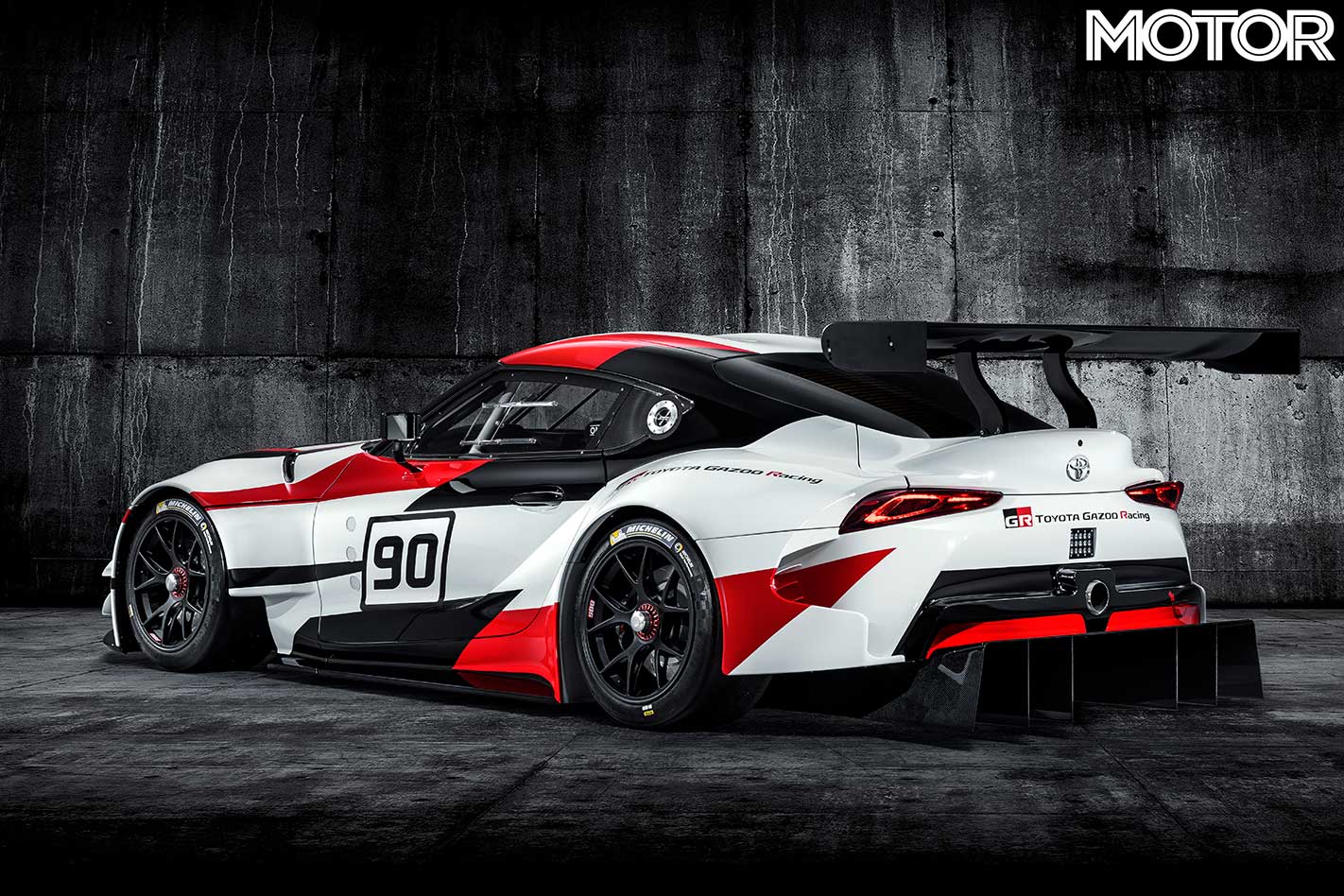
Toyota’s plans to get Gazoo Racing more heavily involved in the development of future performance models was echoed at the recent Geneva Motor Show, where it revealed an aggressively styled racing version of the Supra dubbed the GR Supra Racing Concept (the red road car is our own exclusive illustration).
Planned to be pressed into action at the Nurburgring 24 Hour in 2019, it provides the first tacit clues to the top-of-the-line road-going Supra.
At Geneva, the new concept featured a new interpretation of Gazoo Racing’s red, white and black racing livery together with the number 90, which Toyota says is a historical reference to the new Supra’s codename. The original Supra, launched in 1978, was codenamed A40. It was succeeded by the A60 in 1981, the A70 in 1986 and the A80 in 1993.
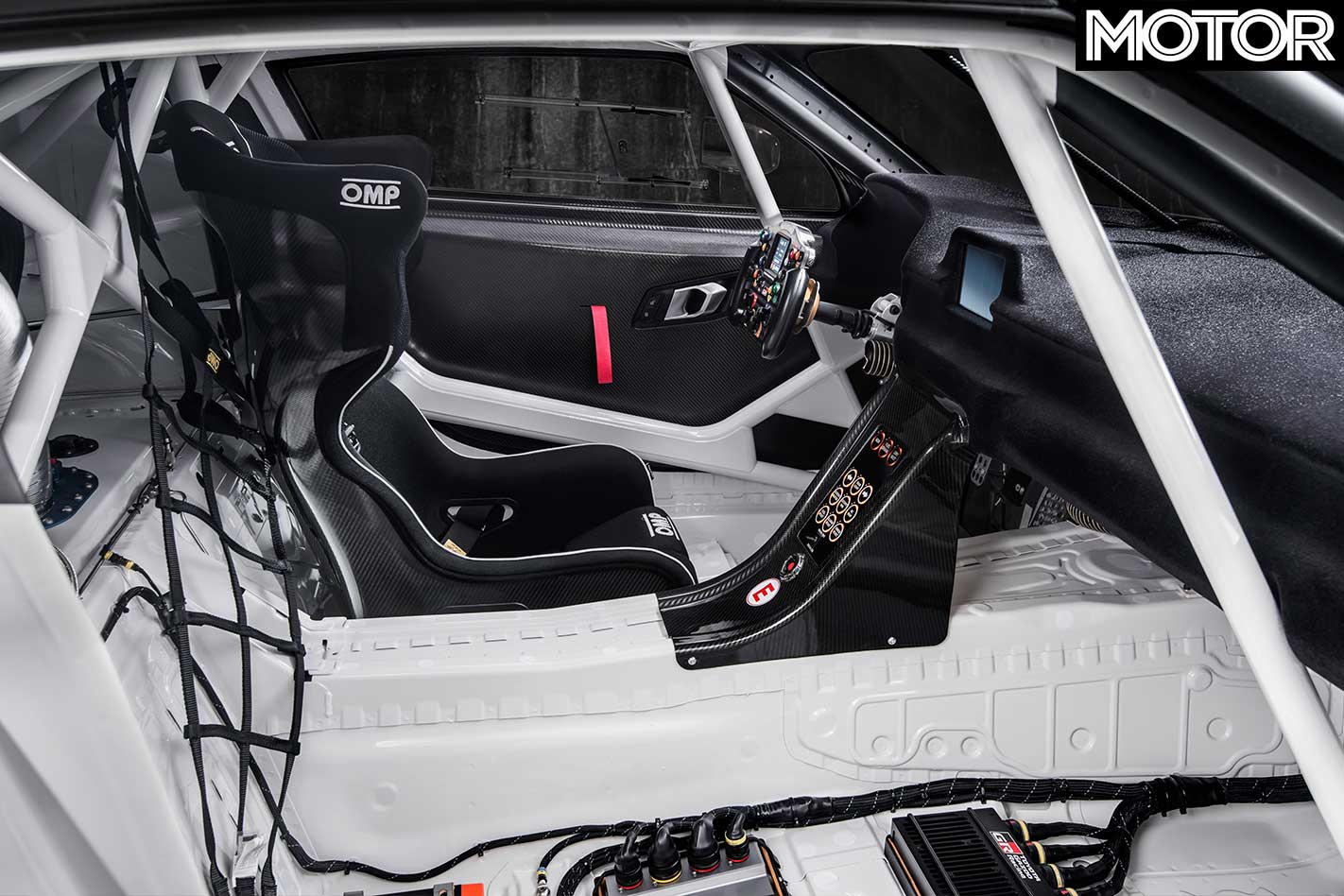
Before the Supra GR arrives in Australian showrooms in 2020, however, Toyota will have its hands full establishing the standard version of its new two-door, which like its predecessor features an expansive fastback style tailgate for added practicality.
Set to debut at the Detroit Motor Show in January 2019 – some five years after the unveiling of the FT-1 concept heralded its return – the new two-seat Toyota coupe, which goes under the official codename J29, has been developed in a joint engineering program with the fourth-generation BMW Z4. The Z4 should hit showrooms just before the Supra.
Unlike the new fixed-roof Supra, though, the upcoming Z4 is planned to be offered exclusively in roadster guise with a folding fabric roof, as hinted to by the Concept Z4 revealed at last year’s Pebble Beach Concourse in Monterey, USA, in August.
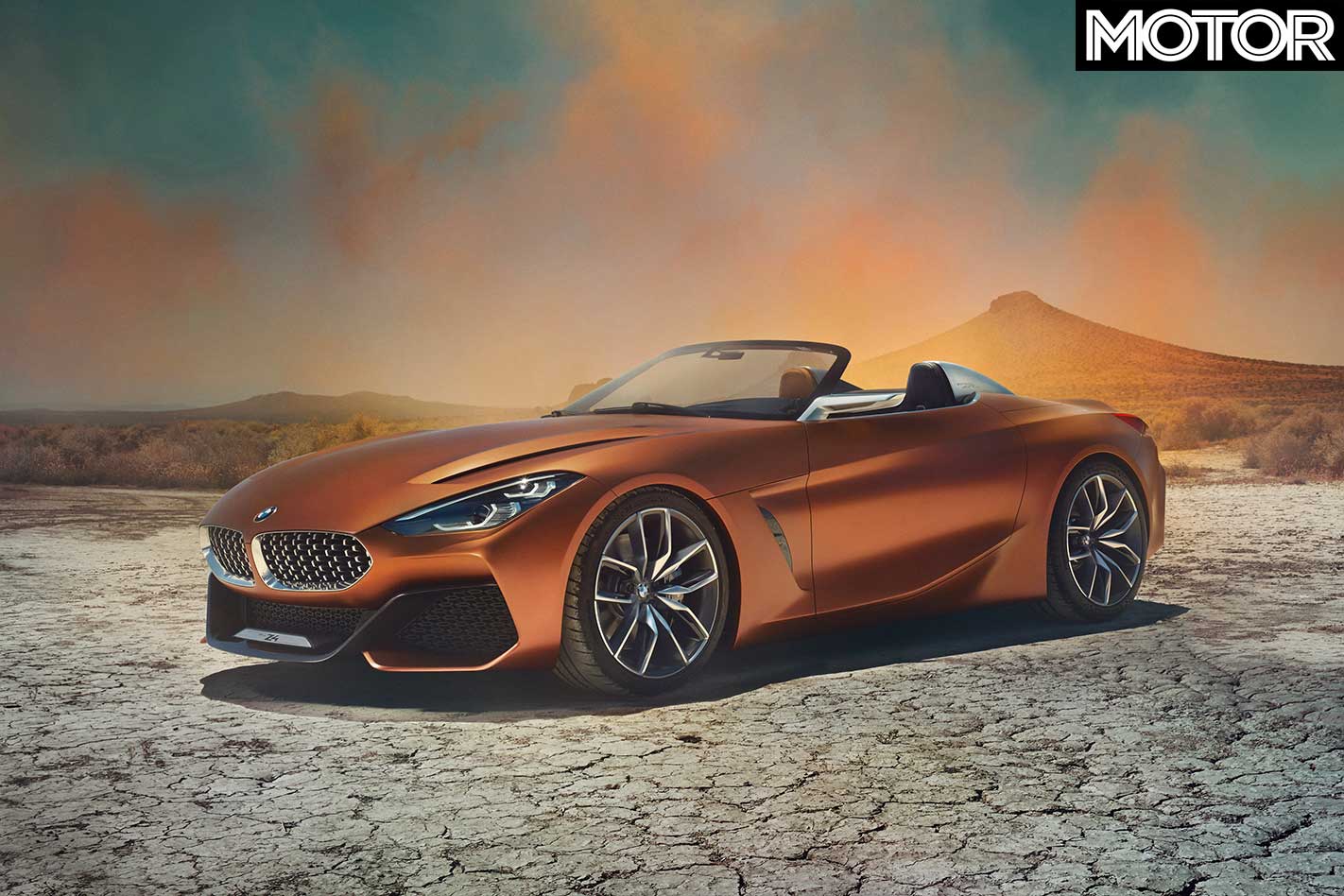
Speaking to MOTOR, Tada-san refuted claims the new Supra is behind schedule, saying it is “steadily progressing in line with engineering targets”. He also insists it will be a very different car to the Z4.
“It is different in character and philosophy to the BMW, they are two different cars,” he says. “We developed our own individual ideas then we shared them to identify where we can share common components.”
The basis for the new Supra is the latest version of BMW’s rear-wheel drive platform, the CLAR (cluster architecture) platform as it is known internally. It uses a floorplan featuring a multi-metal matrix of hot-formed high strength steel and aluminium together with a suspension with double wishbones up front and a five-link arrangement at the rear.
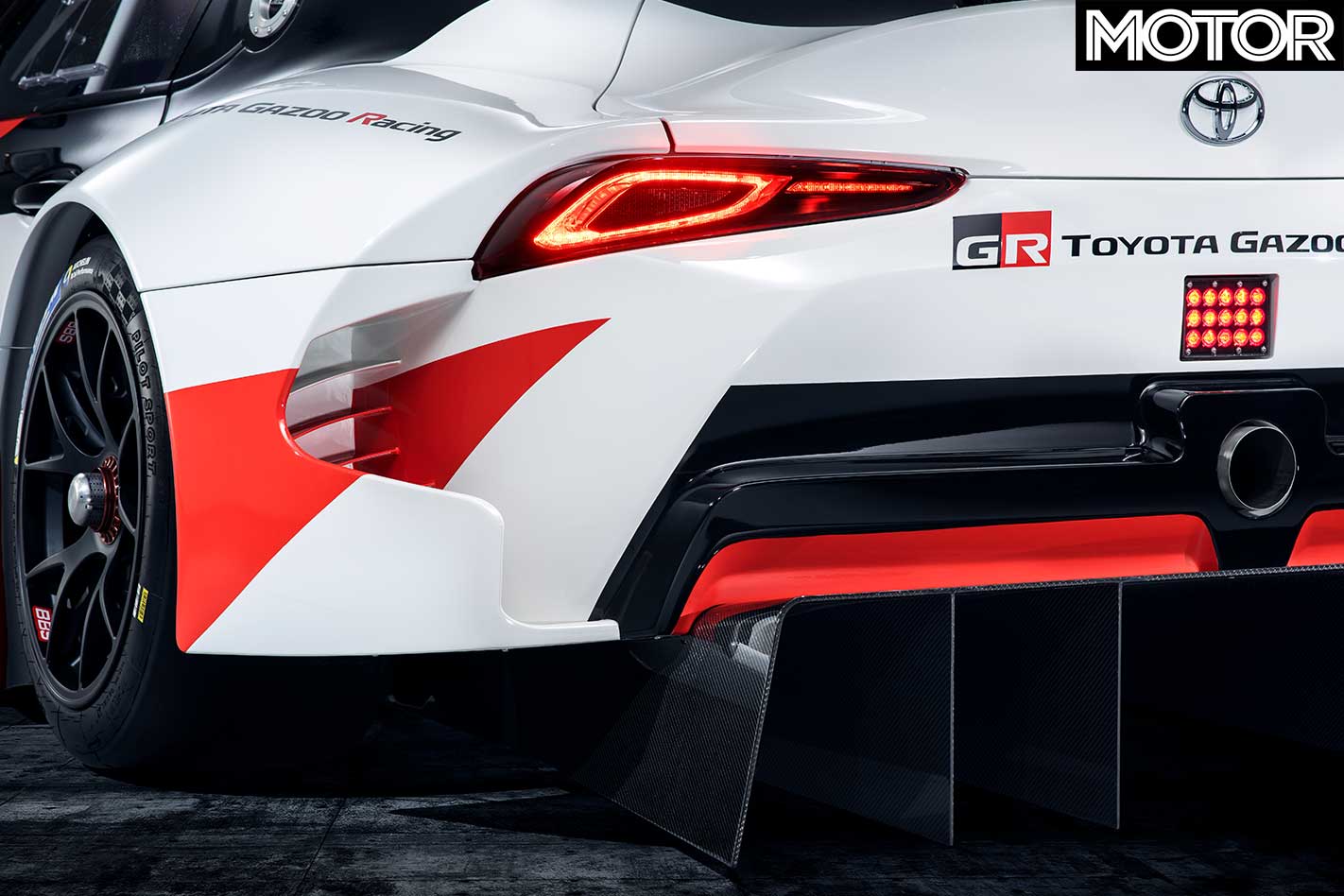
The decision to link up with BMW has seen much of the engineering of the new Supra carried out in Germany. As well as sharing its platform and driveline with the upcoming Z4, MOTOR can reveal much of its body engineering was carried out at KET Karosserie Entwicklung Thurner, a Munich-based specialist that also provides know-how for much of the German car industry, including Audi, BMW, Mercedes-Benz and Volkswagen.
Although it is yet to be made official, standard Supra models are understood to share the same engine as the upcoming Z4 sDrive40i. In the new coupe and roadster pairing, the front-mounted turbocharged 3.0-litre in-line six-cylinder is planned to deliver 265kW, with drive channelled through an eight-speed torque-converter-equipped automatic gearbox featuring steering wheel-mounted shift paddles.
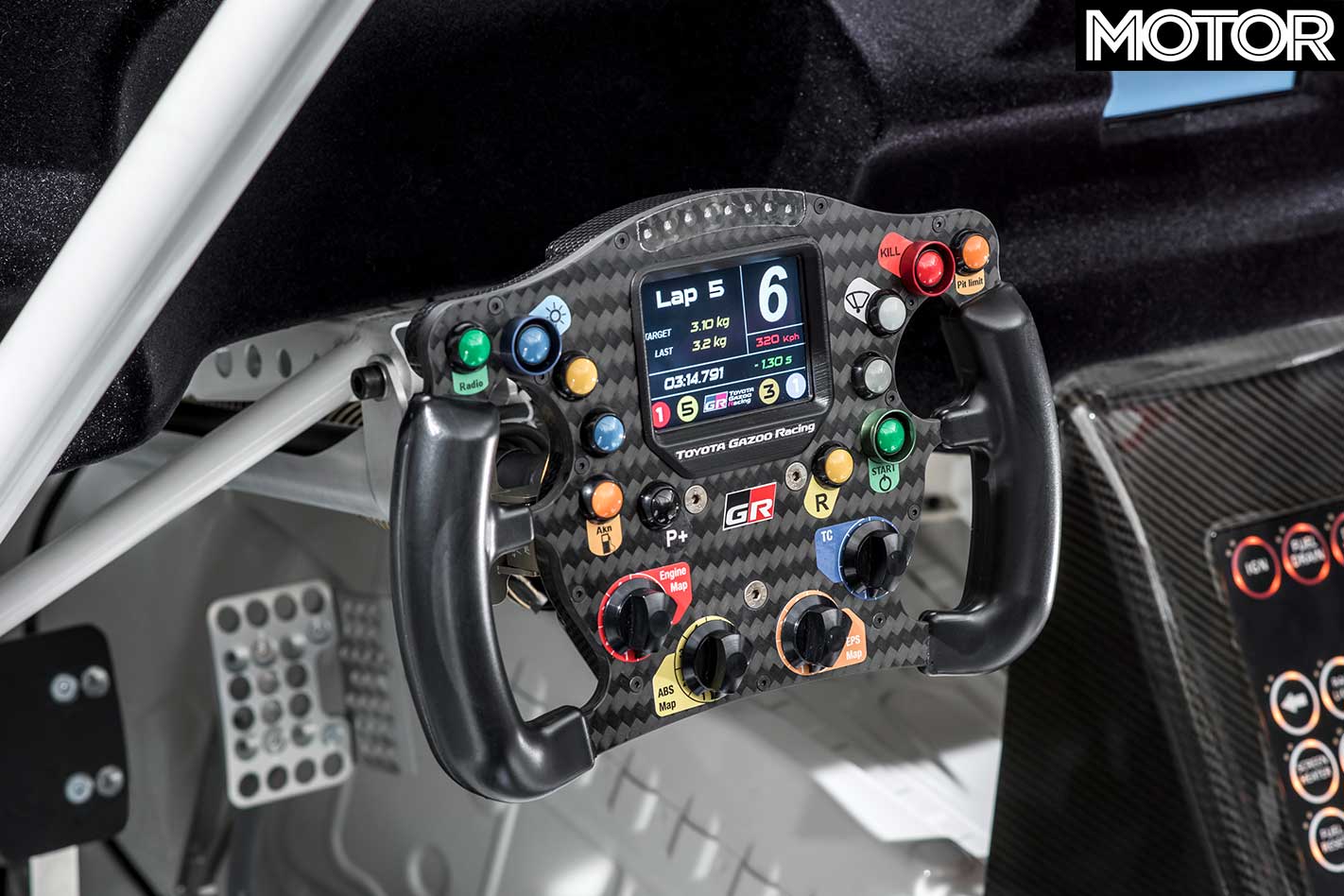
Recent documents lodged with the Japanese motor registry department reveal the dimensions of the new Supra, which is claimed to measure 4380mm in length, 1860mm in width and 1295mm in height. By comparison, the fourth-generation Supra measured 4515mm in length, 1811mm in width and 1265mm in height.
Production of the new Supra is planned to take place alongside the Z4 at production specialist Magna in Graz, Austria, beginning late this year. But while the new Toyota is not due in Australian showrooms until 2019, fans will be able to get a chance to drive it, albeit virtually, as the GR Supra Racing Concept has been given a digital treatment in a recent update of Gran Turismo Sport.
Heart of the Matter
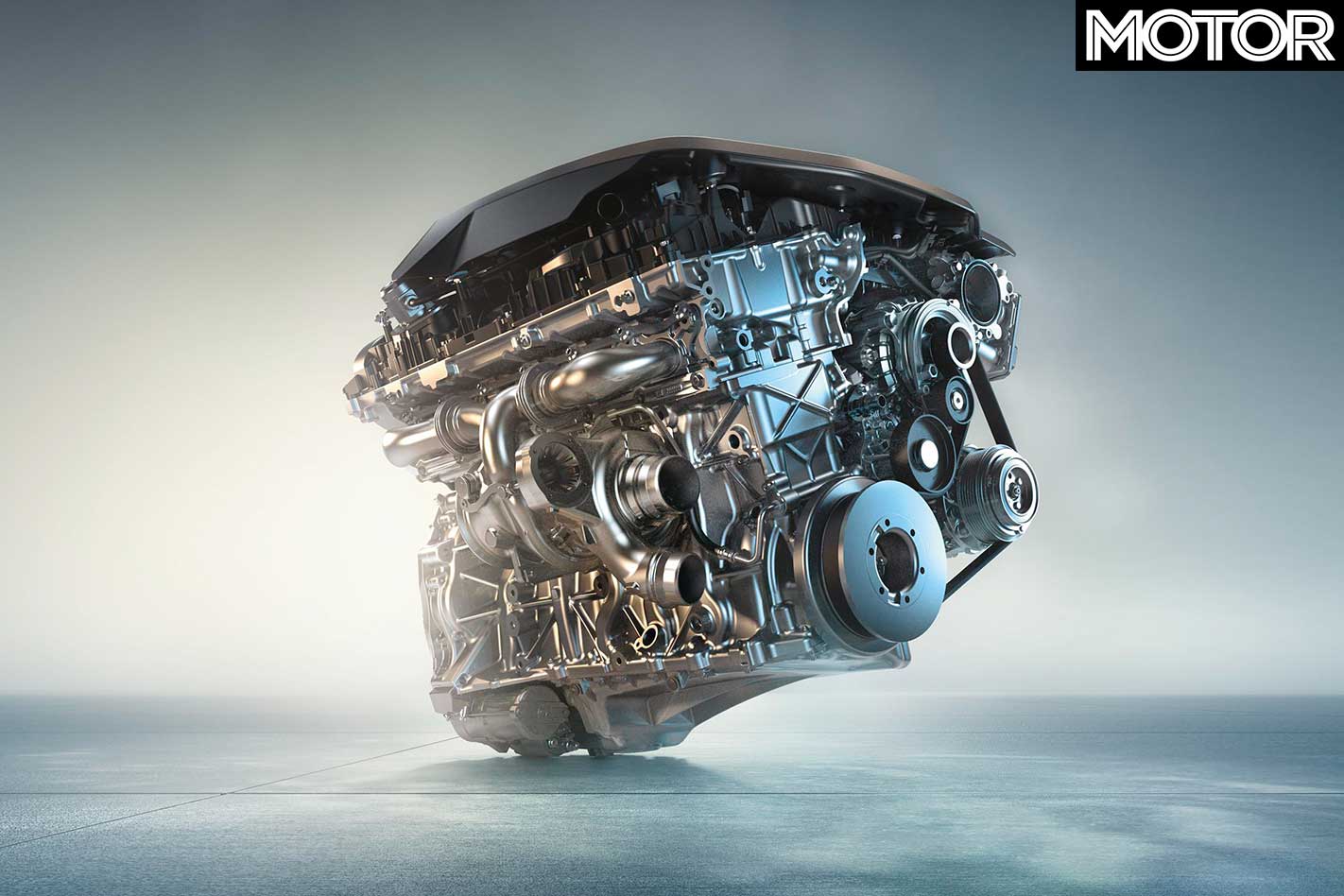
The recently updated B58 is used in models with a ‘40i’ designation and it predominately produces a healthy 250kW/500Nm; although the power figure is likely to reach 265kW as a base in the Supra.
What will be music to the ears of tuners is that the engine was designed with strength and durability in mind. So we’d say that there’s a bit of room to play with (something that’s been a Supra mainstay) in regards to gaining more than the 300kW figure.
The B58 uses a twin-scroll turbo, which has been moved closer to the manifold for better response, while the water-to-air intercooler is cleverly packaged within the inlet manifold. Plasma-coated cylinder sleeves and a ‘closed-deck’ design allow for more boost despite the high 11.0:1 compression ratio.
Four Things Toyota Did to Create the Supra Racing Concept
1 – A massive rear wing and diffuser will create much needed downforce, while the body is made of lightweight composite material. The windscreen and side windows are also made of plastic to keep the overall weight and centre of gravity low.
2 – Centre-lock BBS racing wheels are fitted with Michelin slicks while Brembo Racing calipers and discs have been used.
3 – The cabin is ready for competition with a racing dashboard, OMP driver’s seat harness and quick release steering with a paddle-shift system.
4 – It also already meets safety regulations thanks to a full roll cage, fire extinguisher as well as a host of competition-standard requirements.
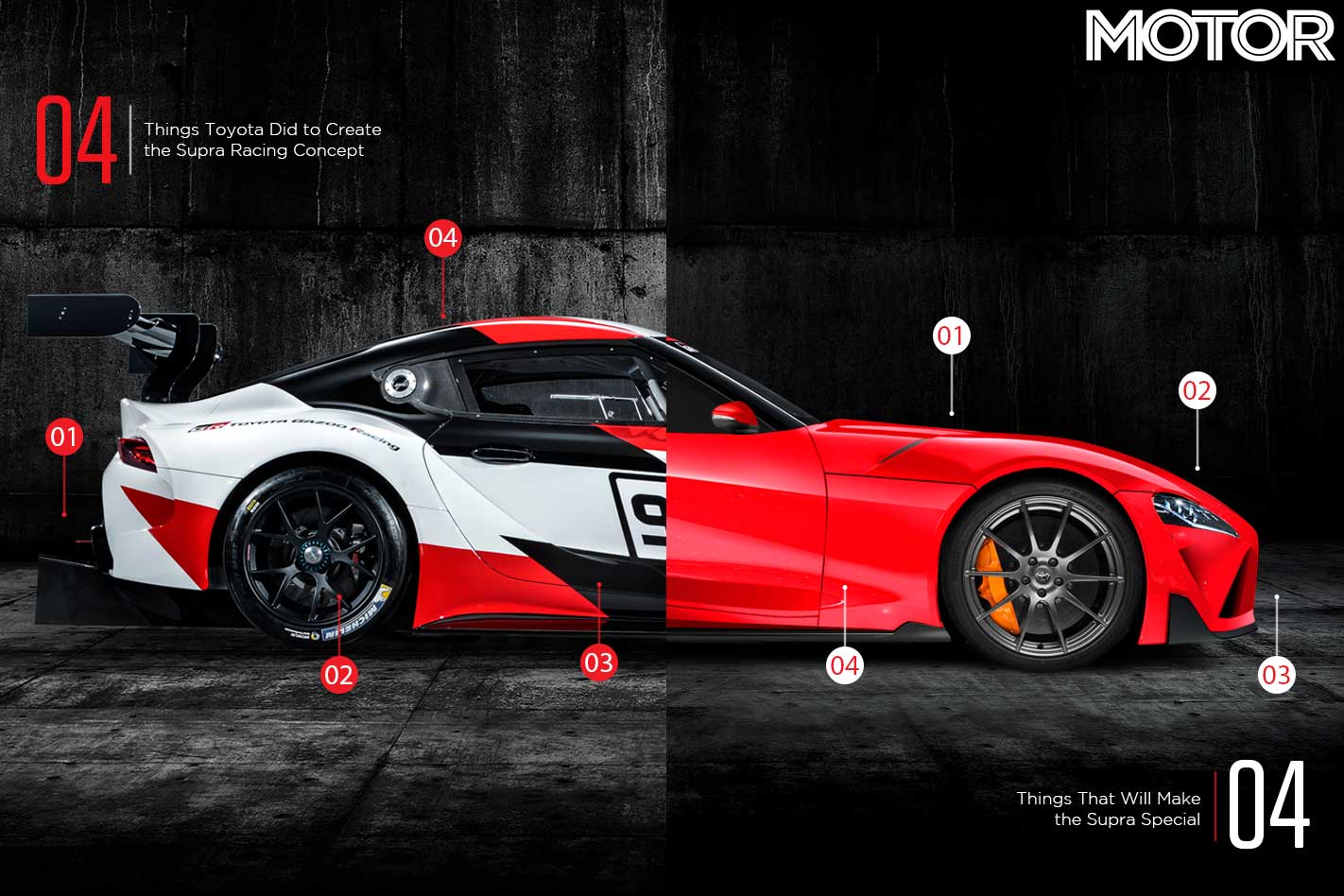
Four Things That Will Make the Supra Special
1 – The overall design has been around for five years, but the final production car isn’t slated for debut until the Detroit Motor Show in 2019.
2 – Propulsion should come from a range of turbocharged inline sixes from BMW. Power is expected to peak at more than 300kW for the range-topping GR variant.
3 – The rear-wheel drive coupe is expected to use a specifically designed ZF eight-speed, torque converter automatic transmission. Sadly there’s been no word on a possible manual option.
4 – The Supra’s basic architecture is believed to be based off BMW’s CLAR rear-wheel drive platform. Double wishbone front suspension should accompany a five-link rear setup with a rumoured electronically-controlled locking rear diff.

